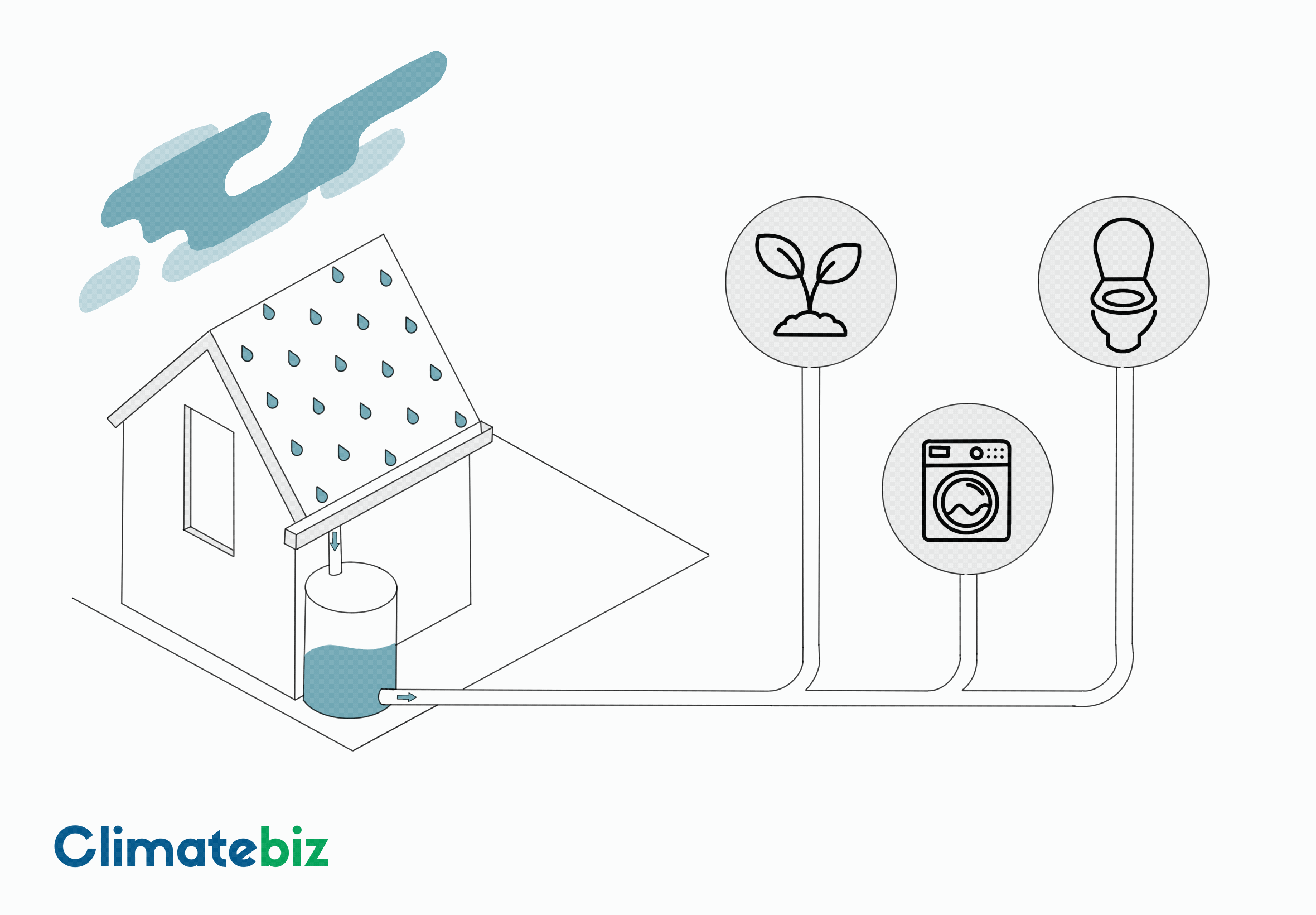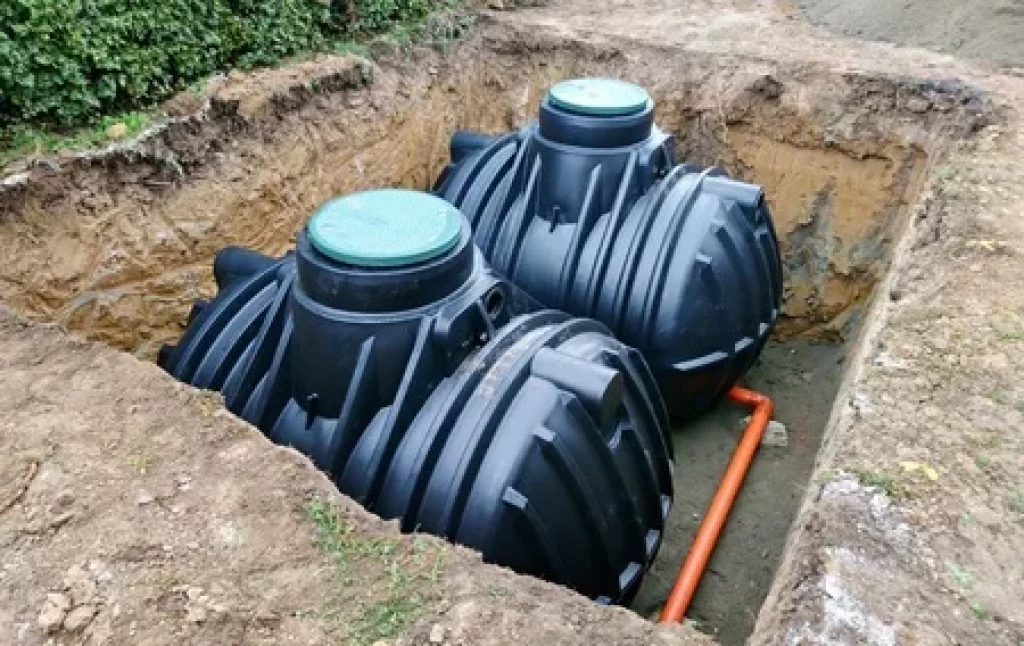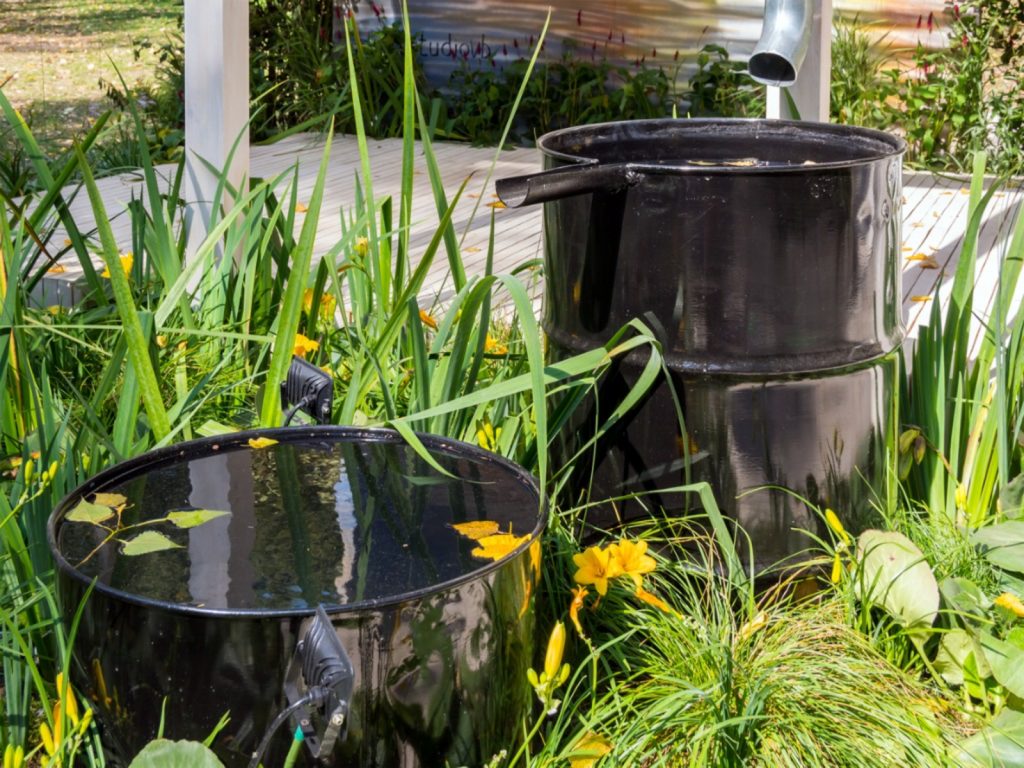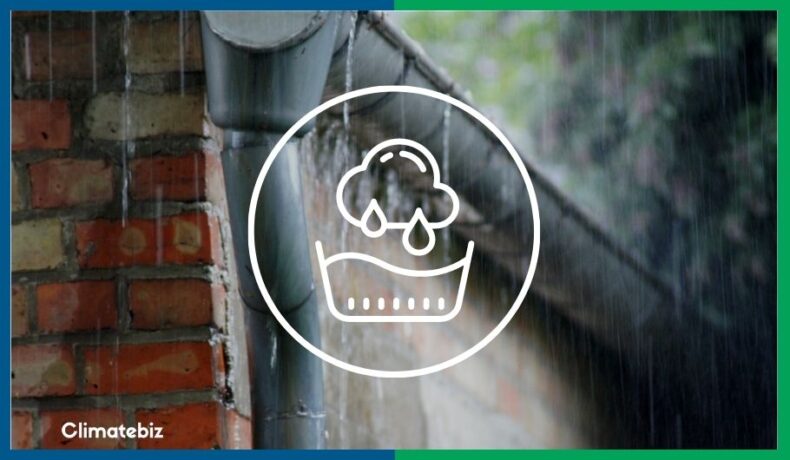You might view rainwater collection as a habit reserved only for very rural areas. Or maybe for survivors trapped on deserted islands.
Well, you’d be wrong; rainwater harvesting has been gaining traction over the years. Many people in countries like the United States, Germany, and Australia are turning to this method to meet their water demands.
As such, rainwater collection has become an integral part of the eco-home design, saving you water and money!
Table of Contents
What Is Rainwater Collection?
When rain hits an impermeable surface, it creates runoff caught by stormwater disposal systems. Therefore, you can save money and water by collecting rainwater for later use.
Some surfaces don’t soak up water, meaning the water simply runs off like water on a duck’s back. These surfaces include your home’s roof, sidewalks, and even parking lots.
Engineers have built systems that catch this runoff and divert it into the sewer. Think about your gutters or stormwater drains.
However, this runoff can harm the environment and is an untapped source of water – literally.
If you collect the rainwater, you can recycle it for use in your home. Implementing a rainwater collection system is a step towards turning your home into an eco-home.
How Does Rainwater Collection Work?
Rainwater collection works by diverting the water into a storage container instead of the sewer. The central concept of rainwater collection is “collect – store – reuse“.
By setting up simple systems, you can catch the rainwater that falls off your roof into a barrel. Then, once you’ve captured the rainwater – and filtered it – you can use it throughout your home.

How Does A Rainwater Collection System Work?
A rainwater collection system has three stages:
- Collect
- Store
- Reuse
Each stage has its own components.
Collect
Rainwater collection requires a gutter, a downpipe filter, and a first-flush diverter.
First, the rain flows off your roof and into your gutter. There, a downpipe filter strains it. This prevents any large objects like leaves from entering the system.
Then the water flows through a first-flush diverter. When it rains, the water collects dust and other dirt. The first-flush diverter catches this water and prevents it from entering the system. It helps keep the water in your tank clean and safe for use.
Store
The tank should have an overflow installed. This is in case it becomes full and needs to overflow. Additionally, the overflow valve should have an insect flap installed. This will prevent bugs from getting into the tank.
After the water has been collected, it flows into your storage container. Most large systems consist of a storage tank, but simple systems use barrels.
The water flows through another filter as it enters the tank. This tank screen filters the water for smaller objects such as insects.
Reuse
Finally, the water is ready for reuse.
The water is pumped out and flows through an irrigation or sand filter. This filters the water so that it can be safe to drink and cook with.
Is Rainwater Collection Safe?

Source: Istock
Rainwater is generally safe for cleaning, cooking, and even drinking (filtration is advised).
No other water-conserving method allows you to do this.
About Drinking Rainwater
Pollutants
Although most rainwater is safe to drink, you need to consider the following:
Those of you living in major cities or heavily polluted areas should avoid drinking rainwater. This is because the water falls from the sky, meaning it’s heavily contaminated with pollutants.
Filtering
When rainwater runs off your roof, it gets dirty. Because of this, we insist you install a first-flush diverter. We also recommend that you install a membrane filter or another drinking-water filter.
Pre-Existing Health Conditions
Avoid drinking rainwater if you have a pre-existing health condition that compromises your immune system; better safe than sorry.
Is It Legal To Collect Rainwater?
Some states actually encourage the use of rainwater collection. For example, states like Oregon and Minnesota offer local incentives to install a rainwater collection system.
To find out more about your state’s regulations regarding rainwater collection, you can refer to this energy.gov webpage.
Related Reading: Rainwater Collection Laws (Legalities explained)
What Are The Benefits of Rainwater Collection?
Rainwater collection comes with the following benefits:
- Free water source — rainwater collection increases your level of self-sufficiency; you won’t need to rely on water from public waterworks.
- Continuous access to water — you won’t be hit as hard by water restrictions/water shortages.
- Better for your garden — rainwater is better for your garden than tap water. The most common chemical in tap water is chlorine which can be harmful to your plants.
- Storm water runoff — Storm water runoff is pollutant heavy (pesticides, bacteria, trash, etc.). It washes into our sewers and ends up in natural water sources. Additionally, it picks up fertiliser and topsoil from your garden, removing essential nutrients. By collecting storm water runoff, you’re protecting our natural water sources and your garden.
What Can You Do With Collected Rainwater?

Source: archdaily
Rainwater is incredibly versatile. It can be used for cleaning, bathing, and drinking. Many underdeveloped countries rely on the rain they collect as their primary water source.
Here’s a list of activities you can use rainwater for:
- Cooking
- Dishwashers
- Washing machines
- All cleaning purposes
- Showering and bathing
- Flushing toilets
- Watering your garden
- Recharging wells and bore holes

Source: Cottage Life
Speaking of toilets, did you know that 24% of your water is used for flushing toilets?
For a 4-person household, that’s 28 gallons of water per day! So you’re literally flushing $20 down the drain every month.
By installing a rainwater system, you can use the water to flush your toilets and save that money. However, there are better ways to use your rainwater. We recommend a low-flow toilet to start saving water and money from flushing your toilet.
Can You Use Rainwater Instead Of Greywater?
You can use either greywater or rainwater to flush your toilets, water your garden, and clean your home.
But avoid mixing the two. Here’s why:
Rainwater has far more uses than greywater does. This is because greywater contains pathogens and is harden to filter than rainwater.
Mixing your rainwater with greywater will only contaminate the clean water. You’ll no longer be able to use rainwater for cooking or showering.
Can You Run Your Whole House On Rainwater?
It’s unlikely that you’d be able to offset your water usage by 100%. So we did a couple of calculations based on averages and stats from both EPA and USClimatedata.
The average American household uses 145,600 gallons of water a year. This equates to 9,000 gallons a month.
If you live in California, the rainy months will allow you to collect around 4,000 gallons of rainwater.
This means that you’ll be able to offset your water usage by 44%.
According to Move.org, the average American water bill is $80. So basically, this means that you’d be able to save $35 on your utility bill. But only if it’s been a good month of rain.
What Are The Best Ways To Collect Rainwater?
By now, you know what rainwater collection is and its benefits. But how do you go about collecting rainwater?
Rainwater Barrels

Source: homeinsulations
Rainwater barrels are the most straightforward method of collecting rainwater. By simply shortening your downpipe and placing a barrel, you can collect the rainwater.
Rainwater Collection Systems

Source: bobvilla
These systems are a step up from rainwater barrels. They include a larger storage container and a good amount of plumbing fixtures.
Rainwater collection systems capture rainwater from your downpipes and divert it to your storage tank.
The only problem with these systems is that they take up space and need to be placed near your home.
‘Wet’ Rainwater Systems

Source: 123RF
The third type of rainwater system is called a ‘wet’ rainwater system. This is because there is always water in the pipes.
This system allows you to connect ALL your runoff water and collect it away from your home for later use.
It achieves this by capturing the water in underground pipes. It then uses gravity to push the water into the storage tank.
Two requirements need to be met to make this happen: First, the tank needs to be placed lower than the gutters of your home. Second, the system needs to be watertight.
Direct Use

Source: gardeningknowhow
If you’re unable to use any of the above collection methods, you can opt to use the water directly.
Simply collect the rainwater in buckets, then use it to fill up your watering cans or your toilet cistern.
You can also re-route your downpipes to your flower beds. That way, the rainwater will run directly into the soil, and you won’t have to worry about the collection.
What Is The Maximum Amount of Rainwater You Can Collect?
Two factors will determine the amount of rainwater you can collect: The size of your runoff area and the size of your storage tank.
Your Rainwater Runoff Area
This is the most significant limiting factor to how much rainwater you can collect; you can only collect as much water as your roof or surface will allow.
To calculate how much rainwater your home’s roof can collect, use this simple formula:
1″ of Rain x 1 sq. ft of area = 0.623 gallons
Here are some quick facts to aid our calculations:
- The average rainfall for the United States is 36.5″.
- The average roof area for a home in the United States is 1,700 sq. ft.
Time for some quick math.
1″ of rain x 1 sq. ft of area = 0.623 gallons
(36.5 x 1700) x 0.623 = 38,657.15 gallons (146,333.23 Litres)
It’s important to note this is an annual amount! The above amount is how much you’ll collect a year, not each month.
It’s hard to determine how much water you’ll collect per month, especially since the rainfall depends on the season and your geographical area.
Your Rainwater Storage Size
You can only collect as much rainwater as your system allows. The above calculations show that you’ll collect 38,657.15 gallons annually. However, you need to remember that your system will not need to hold that amount.
For example, the most extensive average rainfall for Los Angeles, California, is 3.99″ of rain in January.
If we apply the same calculation, you should collect 4,225.8 gallons of rainwater in January.
In conclusion, if you collect ALL your runoff, you’ll need a system that can hold 4,250 gallons at any time.
Final Thoughts
Collecting rainwater is a great way to save water, help your environment and decrease your utility bill.
There are different types of collection systems suited for different needs. For example, rainwater barrels are perfect if you’re looking for that little bit of extra water for your garden.
If you’re looking to use the water in your home, you can opt for a more extensive system.
Collecting rainwater has benefits like decreasing household water use by at least 24%. It also helps the environment by stopping soil erosion and preventing river pollution.
The amount of water you collect depends on your roof area, your storage size, and the amount of water your area receives. You can find out this last stat by googling the average rainfall of your region.
At the end of the day, installing a rainwater collection system is a great idea and an even better investment.
It’s a great first step to building your eco-home!

